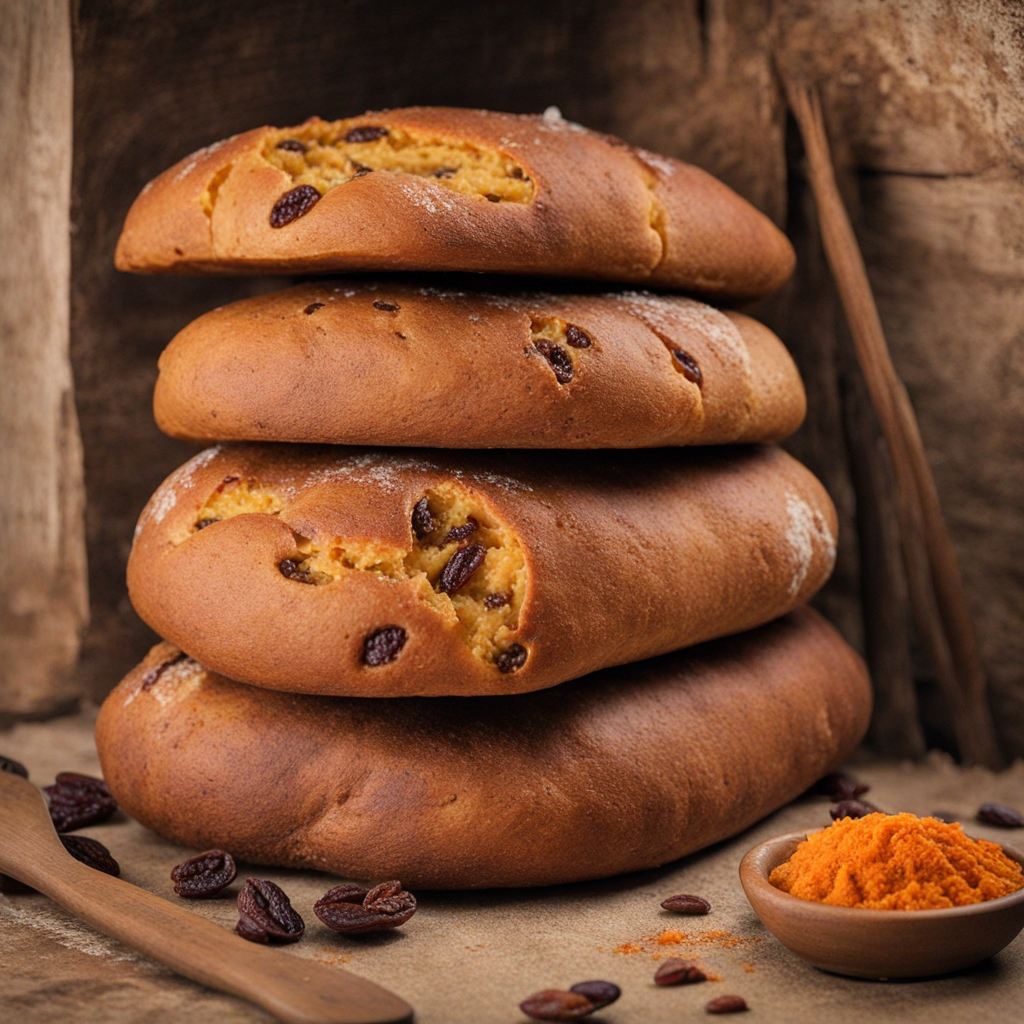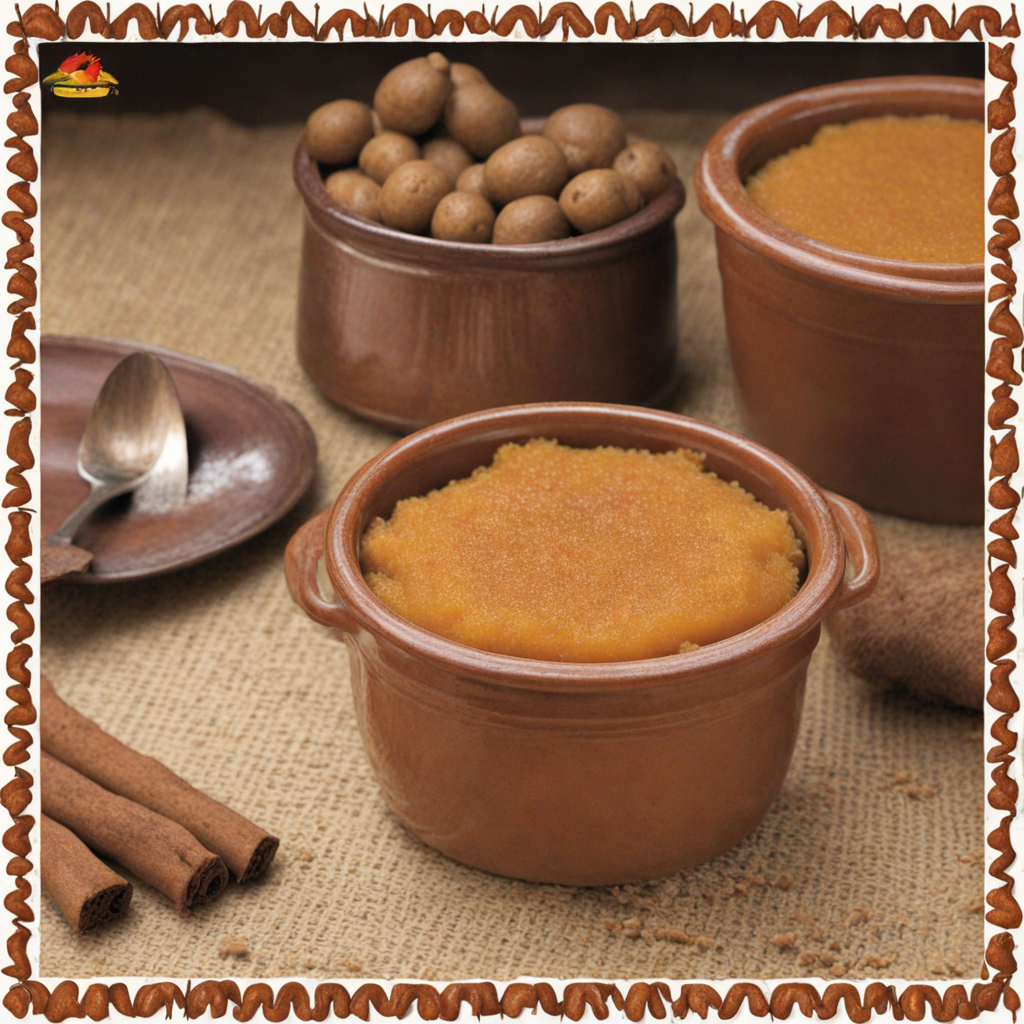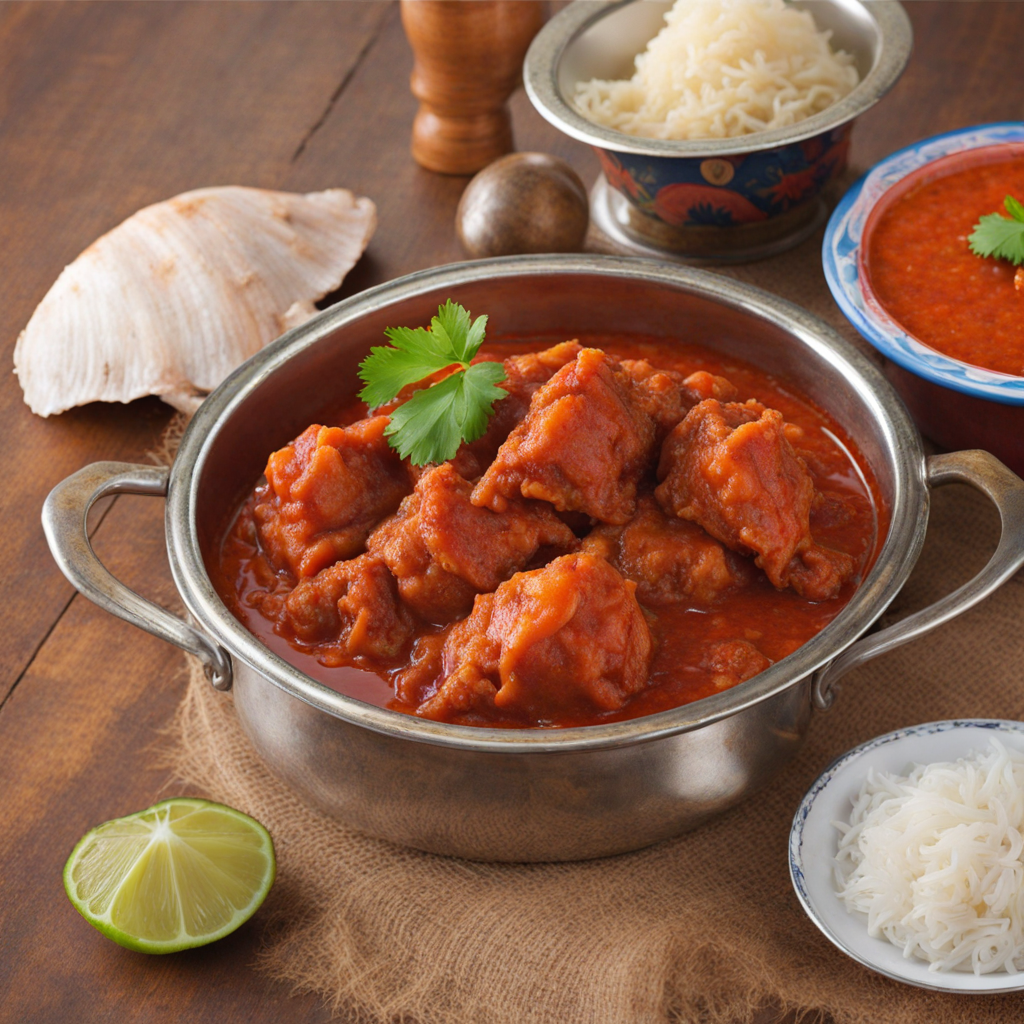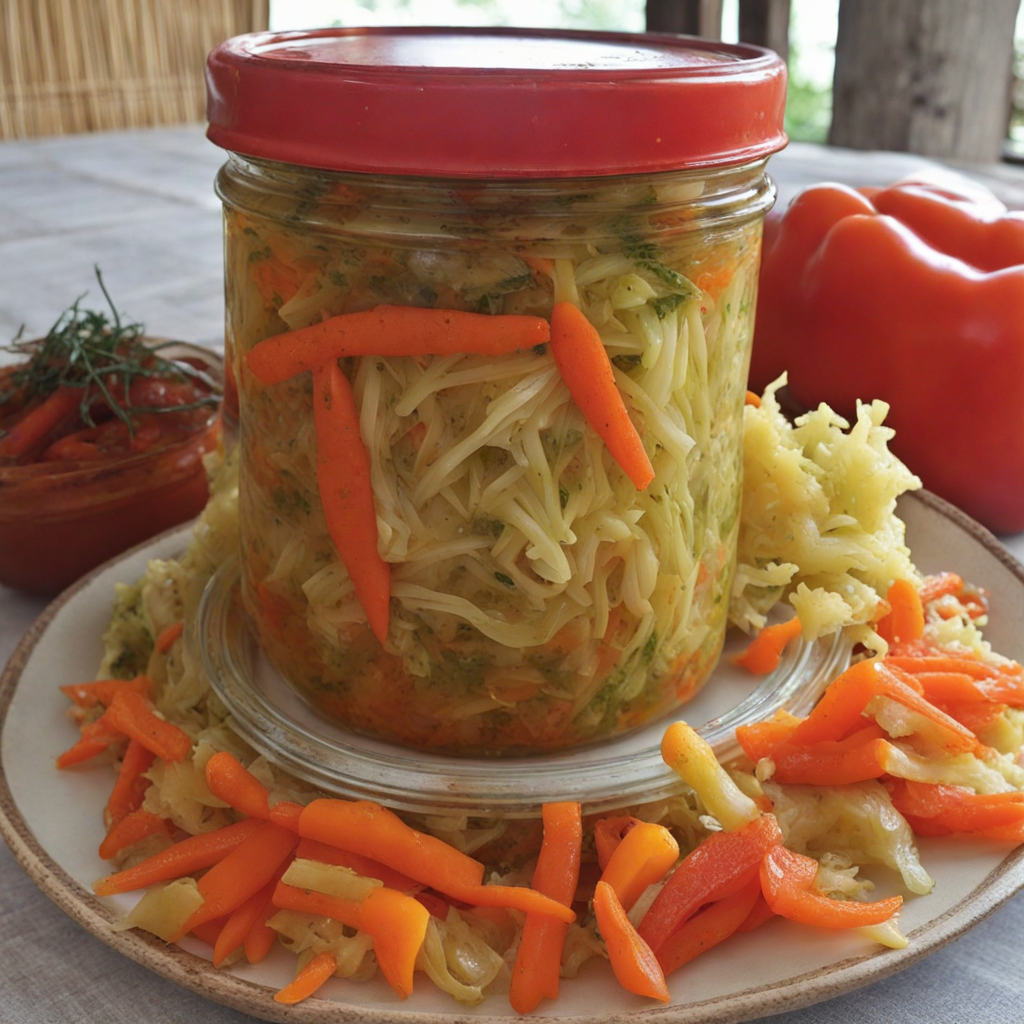Pain Patate
Pain Patate is a delightful Haitian dessert that embodies the rich and vibrant flavors of the Caribbean. This sweet potato pudding is made primarily from mashed sweet potatoes, which lend a natural sweetness and a creamy texture to the dish. The sweet potatoes are typically combined with ingredients such as coconut milk, vanilla extract, and spices like cinnamon and nutmeg, creating a warm and aromatic profile that tantalizes the taste buds. The infusion of coconut milk adds a tropical richness, making each bite a comforting experience. The preparation of Pain Patate often includes the addition of brown sugar or rum, enhancing its depth of flavor while giving it a distinctively Caribbean twist. The mixture is poured into a baking dish and baked until it achieves a firm yet moist consistency, with a golden crust that adds a bit of crunch to each serving. This dessert is not only a treat for the palate but also a feast for the eyes, showcasing vibrant orange hues that reflect the sweet potatoes used in its creation. Pain Patate is often enjoyed during festive occasions and family gatherings in Haiti, serving as a symbol of warmth and togetherness. Each bite transports you to the sun-soaked beaches and lively markets of Haiti, making it a perfect introduction to the country's culinary heritage. Pair it with a scoop of vanilla ice cream or a dollop of whipped cream for an extra indulgent experience, and let the flavors of Pain Patate take you on a delicious journey into Haitian culture.
How It Became This Dish
Pain Patate: A Sweet Slice of Haitian Heritage The Caribbean island of Haiti, known for its vibrant culture, rich history, and tumultuous past, is also home to a unique and beloved dessert known as *pain patate*. This sweet potato bread, often described as a cake or pudding, is more than just a delicious treat; it is a symbol of resilience, creativity, and the melding of various influences that have shaped Haitian cuisine over centuries. To understand *pain patate*, one must delve into its origins, cultural significance, and evolution throughout history. Origins of Pain Patate *Pain patate* finds its roots in the Taino people, the indigenous inhabitants of the island long before the arrival of Christopher Columbus in 1492. The Tainos cultivated sweet potatoes and other root vegetables, which formed a crucial part of their diet. When the Spanish colonizers arrived, they brought with them new agricultural practices and crops, profoundly impacting the local economy and food culture. The introduction of sugarcane, a staple of the plantation economy, would later play a significant role in the evolution of many Haitian dishes, including *pain patate*. During the colonial period, enslaved Africans were brought to Haiti to work on sugar plantations. They brought with them their culinary traditions, blending them with the indigenous ingredients and the new crops introduced by the Europeans. This fusion resulted in a unique culinary landscape, characterized by the use of local ingredients like sweet potatoes, corn, and various spices. The practice of creating dishes that were both resourceful and celebratory became a hallmark of Haitian cuisine. Ingredients and Preparation At its core, *pain patate* is made from sweet potatoes, which are mashed and combined with various ingredients such as coconut milk, sugar, vanilla, and spices such as nutmeg and cinnamon. The mixture is then poured into a baking dish and baked until it achieves a firm yet moist consistency. Some variations include the addition of raisins, peanuts, or even rum, reflecting the creativity and resourcefulness of Haitian cooks. The sweet potato serves not only as a primary ingredient but also as a symbol of survival. During times of scarcity, such as during the brutal periods of slavery and later during political and economic turmoil, the Haitian people have relied on this nutritious tuber to create wholesome meals and desserts. *Pain patate* embodies this spirit of resilience, transforming a simple ingredient into a celebratory dish. Cultural Significance *Pain patate* is more than just a dessert; it is an integral part of Haitian culture and identity. It is often served during special occasions, such as holidays, weddings, and family gatherings. The dish is particularly popular during the Christmas season, when families come together to share traditional meals and celebrate their heritage. The act of preparing and sharing *pain patate* fosters a sense of community and belonging, reinforcing familial ties and cultural continuity. Moreover, *pain patate* is a reflection of the Haitian spirit. The resilience demonstrated in its creation mirrors the strength of the Haitian people throughout history. From the fight against colonialism to the ongoing struggles against political instability and natural disasters, the ability to adapt and innovate in the kitchen speaks volumes about the cultural identity of Haiti. Each bite of *pain patate* carries with it the stories of generations who have faced adversity with courage and creativity. Evolution Over Time Over the years, *pain patate* has evolved while still retaining its traditional roots. The dish has been embraced not only by Haitians but also by the wider Caribbean diaspora, making it a beloved treat in Haitian communities around the world. As Haitian immigrants settled in places like the United States, Canada, and France, they brought their culinary traditions with them, including *pain patate*. In these new environments, the dish has adapted to local ingredients and tastes while remaining true to its heritage. The globalization of food culture has also had an impact on *pain patate*. With the rise of social media, more people are discovering the rich tapestry of Haitian cuisine. Chefs and home cooks are sharing their recipes online, leading to increased interest and appreciation for dishes like *pain patate*. Contemporary chefs are experimenting with the traditional recipe, incorporating modern techniques and flavors while paying homage to its origins. This blend of old and new keeps the dish relevant and exciting, ensuring that it will continue to be cherished for years to come. Conclusion In summary, *pain patate* is a delicious and culturally significant dish that encapsulates the essence of Haiti's culinary heritage. From its indigenous roots to its evolution through colonization, slavery, and migration, *pain patate* tells the story of a people who have turned their struggles into sweet triumphs. Today, it serves as a reminder of the resilience of the Haitian spirit and the importance of community and tradition in a rapidly changing world. As more people discover the flavors and stories behind *pain patate*, it is likely to gain even greater recognition as a symbol of Haitian culture. Whether enjoyed at a festive gathering or made at home as a comforting treat, *pain patate* remains a testament to the enduring legacy of the Haitian people—one sweet potato at a time.
You may like
Discover local flavors from Haiti






